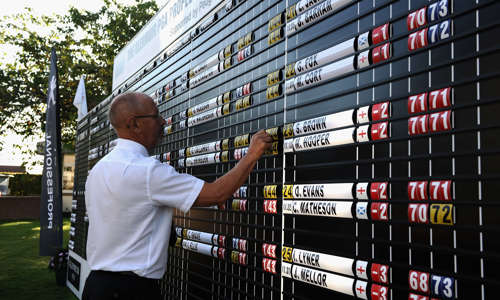How to keep your game going over winter

23/11/2021
PGA Professional Mark Pearson on why now’s the time to make some big improvements rather than packing the clubs away.
1 Now is the time..
Winter is the perfect time to actively try to improve your golf as you’re not playing competitive golf so there are no outcomes. When you make any changes you will hit some bad shots as a new move might be quite tricky so you can work on some technical stuff, see your local pro and get a plan together to increase your motivation. A lot of us stop playing as the weather’s rubbish but the inclination to play well is the same and there are plenty of indoor places to go and do the work. So the key factor is having that plan to take some lessons and get some practice in. And, when you start hitting it a bit better, you will probably make the extra effort to go out and play.
2 When did you last practise your putting?
This sounds so simple but the three essentials to to holing more putts are the read, pace and start line. We might not be putting on the purest greens over the winter in the UK but we can definitely work on our start line. And, if you can improve this, then you will hole more putts. If you go to any professional tournament there is a very good reason that the pros will spend hours checking their stroke – and they are already incredible putters – so why do the rest of us not make at least some effort to improve this part of our games?
There are so many great training tools out there so, for a relatively small price, you can work on your stroke at home. And you can be guaranteed that if you spend just 15 minutes a day on your start line you will be a far better putter come the spring of next year without the need for any lesson.
3 Do you want to hit it further?
The game is dominated by the desire to hit it further but that doesn’t translate far to the club golfer. In our heads Bryson and co are playing a different game but it really isn’t beyond any of us to find an extra 15 yards over winter.
When you are next at the range hit 10-15 balls as hard as you can, absolutely flat out, and your speed will gradually increase. We also spend more time in the gym over the winter so try and incorporate some golf-specific stuff into your training and you will notice a difference. You will hit some odd shots at first but you will then find it quite liberating and realise that you can do it alright. And keep on doing it until it becomes the norm, you will think that you’re going to lose some control but you’re more likely to get more control as there’s more commitment to the hit.

4 Use your range time wisely
There really isn’t a lot of point in hitting a load of 7-irons into a field, you might hit them OK but it’s largely meaningless. There has to be a focus for your bucket of balls, it might be a technical improvement that you’re looking for or you might need some more performance-related practice or it might be a hybrid of both. I work to a system that I call ‘The 5 Ps of Winning Golf’ - Passion, Planning, Process, Pressure and Performance.
The passion keeps us going and comes from you. We all have to sacrifice something to make some improvements as we haven’t got limitless time and money so it has to come from you to a large extent. As regards the plan, you have to know exactly what you’re trying to achieve and the process is the sexy part of coaching; the actions, technical changes or drills that are needed. These days, with the likes of Top Tracer, we can easily add in some consequence to our practice which is fantastic. Then there’s the pressure and getting out on the course and learning to hit shots from sloping lies and when it’s windy and the skills for when you’re trying to finish off a medal round. And then, finally, the performance.
Most players have some passion, they miss out the plan, they do some process but it’s normally poor and then they perform so they’re missing a load out. And they will never do anything to put themselves under pressure.
5 Work on what you’re uncomfortable with
In my opinion the pressure stage is the most overlooked part of development in golf, often golfers are practising in such a manner that only strokes their ego rather than preparing them for the rigours of competitive play. So incorporate elements into your practice and development that takes you out of your comfort zone, just like you feel on the course, so you might fail and then learn from your failures. We need to find tasks that are challenging, have some context to playing on the course, have variability of the type of shot and spacing between shots that symbolise the rhythm of the game.



































